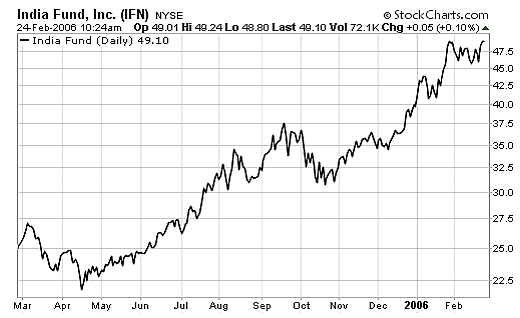| Home | About Us | Resources | Archive | Free Reports | Market Window |
China's Message To Us... Give Up Now!By
Monday, February 27, 2006
“How many hours a day do they work in your factory?” I asked. “Oh, about 12 hours a day unless its crunch time.” Shane answered. “How many days a week do they do that?” “Seven days a week.” “How much do they earn?” “1000 RMB [about $120 U.S. dollars] a month.” Nobody in China said to me, “Steve, American factories ought to just give up now,” but they might as well have... the message is obvious: When it comes to quality, quantity, and price, no country in the world can compete with China. China has tens of millions of workers ready to leave their families and work 12 hours a day, 7 days a week. When the only religion is money, Sunday is not a day off. During my visit to China, I spoke with the owner of a clothing factory in China named Shane. He pays his workers $120 a month. His end product is clothes sold in Australia... As a young man in South Africa, Shane had a lot of ambition... He went to the U.S. to figure out what clothing fashions were popular. He then went to clothing factories in China to imitate them for the Australian market. That imitation is how the clothing market works. Shane told me how crazy it was when he started. For example... The first factories he worked with on his own were nowhere near cities with hotels. There was no English, anywhere, so he had to rely on guides and interpreters, hoping they were telling the truth. With no hotels, he’d sleep in the dorm facilities with the workers. Shane told me the dorms for the factory workers weren’t exactly five-star a decade ago. With no heat in the wintertime, he sure had some sleepless nights. I don’t know how much better those facilities have become in ten years but I can tell you that I’ve never seen more change in a city than the last ten years in Shanghai. When you see everyone working so hard, living in tough conditions, and still happy to make a buck, it makes you think the rest of us are just being pansies. The rest of the world simply can't compete with this dirt-cheap work ethic... Back home in the U.S., I have a good friend who imports home furnishings, sold at huge retailers like Lowe's and Home Depot. When he started his business a few years ago, he used to import from Mexico. At first, Mexico worked out okay. But as his business started to scale up, he couldn’t find anyone in Mexico that could handle the volume. Orders wouldn’t come in on time, he’d be faced with a lot of breakage, and the quality was inconsistent. Today, he travels the world, looking for products the big stores might be interested in. I think he sources from Vietnam now, but for the most part, he says the same thing: When it comes to quality, quantity, and price, no country in the world can compete with China. The religion in China today is money. Like the rest of us, the Chinese badly want to give their children a better opportunity than they had for themselves. They see the opportunity right now, and they’re seizing it... quite likely working harder than anyone in the world. ‘China is the world’s workshop,’ is an expression I’ve often heard in the past. But it took on a whole new meaning once I saw it for myself. For the next decade, at least, and possibly much longer, don’t forget this: When it comes to quality, quantity, and price, no country in the world can compete with China. Good investing, Steve Market NotesINDIA: WHERE THE HYPE IS Investors are wild about India right now. Many Indian-related investments have gained over 100% since early 2005. Due to massive amounts of technical worker outsourcing, the NYSE-traded India Fund (IFN) is drawing attention because of its heavy weightings in Financial and Computer Software stocks. All this attention deserves a strong warning. The India Fund is currently trading at a 24% premium to net asset value. This is a giant premium... an overvaluation. It illustrates how hyped India has become as place to invest. Trade accordingly. The past year in the India Fund:
|
Recent Articles
|


